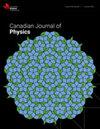Cosmic Expansion of the Universe Characterized by Anisotropic Viscous Fluid Cosmological Models
IF 1
4区 物理与天体物理
Q3 PHYSICS, MULTIDISCIPLINARY
引用次数: 0
Abstract
In this paper, the cosmic expansion of the universe filled with viscous fluid has been discussed in Bianchi type-I space-time. To solve Einstein's field equations, a time-varying deceleration parameter, (q(t)) yields a time variable scale factor a(t) = [\sinh(\alpha t)]^{\frac{1}{n}}, with `\alpha' and `n' are positive constants. We also consider a time-varying gravitational constant (G) via the formulation 8\pi G = G_{0}a^{m}, where `G_{0}' and `m' are positive constants. Further, based on the third constraint, two different viscous cosmological models, one by considering the perfect gas equation of state p=\omega \rho and the other by considering time-varying bulk viscosity coefficient (\xi(t)), have been constructed. It is mentioned here that this particular choice of scale factor generates a class of accelerating models for n<1 while for n > 1, the transition of the universe from early deceleration to current acceleration takes place. An important feature of the models is decreasing dark energy candidate, i.e., cosmological constant (\Lambda) with time, fine-tuning with the results from recent supernovae Ia observations. The various physical parameters involved in the models have been discussed analytically and graphically and are found in good agreement with recent observations. For the physical acceptability of both the models, energy conditions are shown graphically. The models are found to be physically acceptable, particularly in identifying the universe's transition. We have discussed the statefinder and observed that all the trajectories indicate dark energy candidates as Chaplying gas and quintessence for different constraints (\alpha, n). We have also calculated the cosmographic parameters such as jerk, lerk, maxout to analyze the physical behavior of the DE models.以各向异性粘性流体宇宙学模型为特征的宇宙膨胀
本文讨论了在Bianchi - i型时空中充满粘性流体的宇宙的膨胀问题。为了求解爱因斯坦场方程,时变减速参数(q(t))产生时变尺度因子a(t) = [\sinh (\alpha t)]^ {\frac{1}{n}},其中' \alpha '和' n'是正常数。我们还通过公式8 \pi G = {G_0a}^{m}考虑时变引力常数(G),其中' {G_0}'和' m'是正常数。进一步,基于第三个约束,构建了考虑理想气体状态方程p= \omega\rho和考虑时变体积粘度系数\xi (t)的两种不同粘性宇宙学模型。这里提到,这种特殊的比例因子的选择产生了一类加速模型n 1,宇宙从早期减速到当前加速的转变发生了。该模型的一个重要特征是暗能量候选值,即宇宙学常数(\Lambda)随着时间的推移而减小,并与最近的超新星Ia观测结果进行了微调。模型中涉及的各种物理参数已进行了分析和图解讨论,并发现与最近的观测结果非常吻合。为了两种模型的物理可接受性,能量条件用图形表示。人们发现这些模型在物理上是可以接受的,特别是在确定宇宙的转变时。我们讨论了状态探测器,并观察到所有的轨迹都表明暗能量候选者是不同约束条件下的chapling气体和quintessence (\alpha, n)。我们还计算了宇宙学参数,如jerk, lerk, maxout,以分析DE模型的物理行为。
本文章由计算机程序翻译,如有差异,请以英文原文为准。
求助全文
约1分钟内获得全文
求助全文
来源期刊

Canadian Journal of Physics
物理-物理:综合
CiteScore
2.30
自引率
8.30%
发文量
65
审稿时长
1.7 months
期刊介绍:
The Canadian Journal of Physics publishes research articles, rapid communications, and review articles that report significant advances in research in physics, including atomic and molecular physics; condensed matter; elementary particles and fields; nuclear physics; gases, fluid dynamics, and plasmas; electromagnetism and optics; mathematical physics; interdisciplinary, classical, and applied physics; relativity and cosmology; physics education research; statistical mechanics and thermodynamics; quantum physics and quantum computing; gravitation and string theory; biophysics; aeronomy and space physics; and astrophysics.
 求助内容:
求助内容: 应助结果提醒方式:
应助结果提醒方式:


